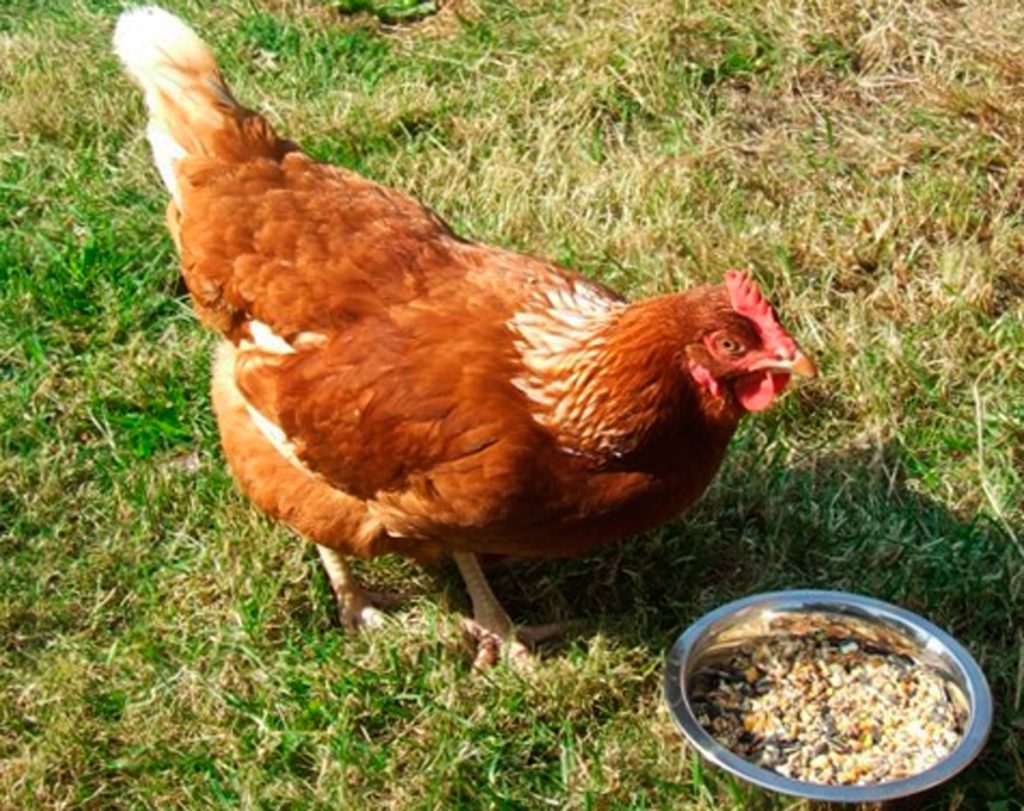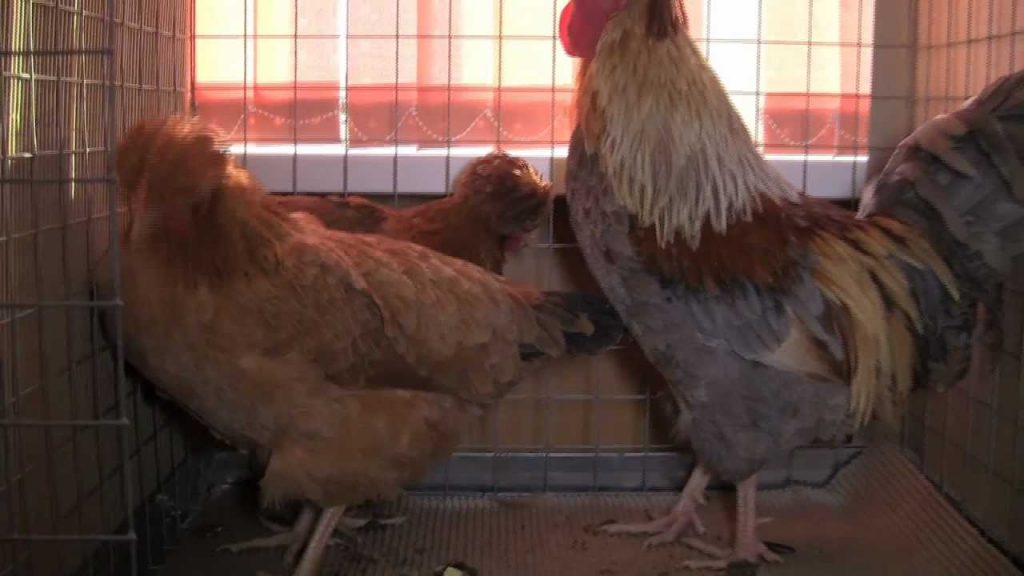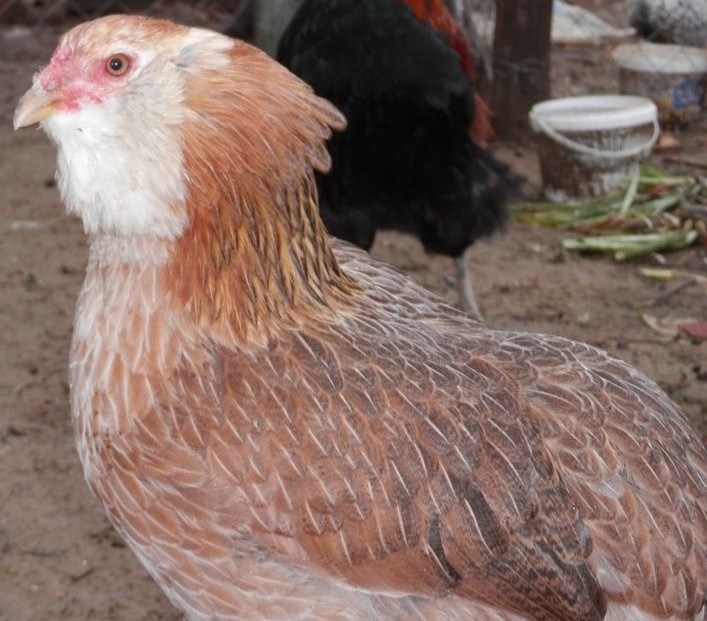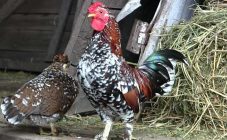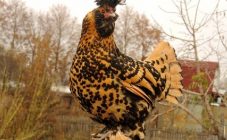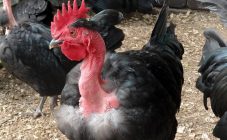Content:
Chickens are probably the most common bird in the backyard. This has been the custom for a long time. The bird is undemanding to feed, it enters productivity in a short time, it is suitable for keeping in almost any conditions. If only the roof was from precipitation and the walls from the winds. Breeders all over the world tirelessly cross different breeds in order to obtain a bird with the desired properties. For commercial breeding, of course, productivity and early maturity of the breed are important. These are the Dominant chickens. Because of its merits, this productive hen has conquered almost the entire world. In the farms of 30 or more countries, she took a dominant position.
History of the breed
The result of the selection of Czech scientists is also successful in Russia. For the climatic conditions of Central Russia and Siberia, its high adaptability to keeping conditions, good disease resistance and, of course, high productivity are especially valuable. Chickens Czech Dominant were produced as an egg direction, but the impressive size of the poultry makes it possible to use it for meat.
Dominant chickens: description
There are 12 varieties of this breed. Moreover, they differ only in color (in different variations), which are:
- speckled;
- brown;
- amber;
- blue;
- black;
- brown;
- black and white;
- redheads;
- white;
- golden;
- crested (DS-109).
Of these, poultry farmers most often breed black, crested and speckled Dominant. The latter variety is larger than the others with good egg production (310 eggs in 1.5 years). Chickens weigh 2.5 kg, males up to 3.2 kg. However, if we talk about a farm with a large number of poultry, then it is worth choosing Dominant brown D102 and Dominant white D159.
Laying hens of the Dominant black D109 breed are found more often than other species. They can be found in any farm that breeds meat and egg varieties. To breed D109, Rhodeland and Plymouth Rock were involved. Among chickens, Dominant males or females can be distinguished immediately after hatching: females have a dark head, and males have a light spot on the crown. However, all chickens of this breed have a similar feature.
There is also a subspecies of Sussex, which is most common in Italy, at home in the Czech Republic and Poland. Poultry farmers put it in second place after the black variety in terms of productivity. By the type of plumage, it resembles the Light Sussek chickens (sometimes they are called that). The variety has a noticeable dominance of white feathers. The tail is black with a green tint. The neck is adorned with white feathers with black ends. Sussex has excellent productivity (from 1.5 years of age) - 320 light brown eggs per year from one layer. The weight of an adult is slightly more than 2 kg.
The Blue Dominant is considered to be the most adaptable to severe weather conditions. At the same time, the productivity of the species does not suffer - about 300 large brown eggs per year per hen. In color, blue chickens are similar to the birds of the Andalusian breed. According to the breeders, this species is doing badly with hatching chickens, but they are long-livers. The blue Dominant has the largest percentage of those who have survived to 10 years or more.
Amber Dominant D843 is distinguished by an interesting color of feathers and an excellent character.This variety has taken root well even in the highlands of Switzerland. The amber species has good productivity:
- 300 eggs per year;
- 61.5 g weight of one egg;
- 2.2 kg chicken weight.
The productivity and characteristics of the subspecies of the Dominant Crested chicken breed (DS-109) are interesting. In addition to the fact that they are already hatching with a tuft, so are the colored chickens.
The decoration of the representatives of the cross is a luxurious plumage. The downy layer of feather does not fit snugly against the carcass, which makes the bird look larger. Short paws also contribute to this. The head is neat with dense pink leaf-shaped comb and earrings. Small eyes are round, shiny with an orange border of the pupil. The carcass is rounded with meat-like muscles, fleshy thighs and legs, massive breast and back. The small wings are well-feathered and close to the carcass.
On average, an adult Dominant rooster weighs 2.7-3.2 kg, and a chicken weighs about 2.2 kg. In a year, 1 chicken is capable of laying 320 eggs weighing up to 65 g. The shell is brown to dark brown in color.
Chickens begin to lay eggs early, at the age of 5-6 months. But the growth process of the bird itself will continue up to 11 months. Only then will she gain optimal weight. In some individuals, maturation lasts even longer. They will begin laying eggs a little later. For the sake of fairness, it should be noted that such layers will run longer in time, and this can be considered an advantage.
Nevertheless, the maximum productivity of females falls on the first and second years from the beginning of egg production. Productivity in the future will decrease each subsequent year by 15-20%. Therefore, at the age of three, it would be better to send the laying hen to slaughter.
Obtaining fertilized eggs is not a problem, but "persuading" the hen to incubate the offspring on its own is unlikely to succeed. The reproduction instinct is extremely poorly developed. Even after starting the process, most nests leave the nest before the deadline. It would be more accurate to lay eggs in an incubator or even buy ready-made chickens. It is also necessary to take into account the fact that parental qualities are not transmitted to the offspring of crosses.
Bird maintenance and care
The breed trait of dominant chickens is vitality. They are already born with strong immunity and do not succumb to diseases throughout their lives.
The big advantage of young Dominants is 100% survival rate. Therefore, even beginners at home can cope with the cultivation of this hybrid. After hatching, the Dominant chicks quickly become overgrown with feathers and gain weight. By the way, the Dominant hen's chickens grow faster than the cockerels.
To avoid misfires when growing young, you need to follow some rules:
- Withstand temperature conditions. From the incubator, the chickens are moved to a room with a temperature of 30-32 ° C, and then the degrees are lowered by 2-3 divisions weekly.
- Observe the cleanliness of the room, food utensils, drinkers.
- Stick to a diet. In the first two weeks, you need to feed 6 times with equal intervals between meals. Food should be fresh and finely chopped.
- The food should be balanced (it is better to buy a special mixture). It will be useful to include boiled eggs, cottage cheese, cereals, chopped herbs, vegetables in the diet.
- A container with river sand, shell rock is required.
- From the age of one month, walks in the air are encouraged, avoiding hypothermia of the chickens.
Cross bred specifically for maximum egg production. But in order to carry almost daily, the bird needs a very nutritious and balanced feed. Experts consider three meals a day to be optimal.Moreover, the volume and composition of feed does not depend on the season - chickens rush all year round. As feed for laying hens:
- warm mash (in winter) from cereals, bran, vegetables, kitchen waste;
- grains of barley and wheat;
- special chicken feed.
It is recommended to add vitamin supplements and trace elements to any food:
- bone meal;
- a piece of chalk;
- fish fat;
- boiled vegetables;
- the herbs are dry and fresh.
This is especially true for substances of cellular content. Free-range birds find what they need on their own.
These thoroughbred chickens are famous for their docile nature. Get along with any bird population in the yard. Even males do not rush into battle at the first opportunity. Chicken Dominant calmly treats new feathered inhabitants and easily accepts them into his society. According to breeders, this greatly facilitates keeping different birds in a confined space. But these chickens are unusually vociferous. While awake, they continuously sing, cluck, and make noise.
This cross is resistant to disease. Strong immunity protects hens from almost any infection and helps to overcome the disease, if it happens to catch it, without external intervention. In the conditions of a personal backyard, it is enough to observe the elementary rules for keeping a bird. And on an industrial scale, it is recommended to vaccinate against the main avian diseases (bronchitis, bursitis and Newcastle disease) immediately after hatching. A revaccination is needed in a month.
To prevent parasites, it is enough to place containers with ash in the house. Bathing in it, the laying hen will independently eliminate unwanted settlers.
The following conditions are optimal for keeping the Dominant:
- living space of 1 m² for 5 hens;
- a thick layer of peat or straw bedding with the addition of slaked lime (for disinfection);
- insulated chicken coop (additional heating is needed when the outside temperature is below −5 ° С);
- the obligatory presence of a walking area;
- cleanliness of the room, utensils for food and water.
The best option is considered to be the keeping of Dominant laying hens in free enclosures. The sun's rays will help them get vitamin D. This will have a positive effect on their health. The lengthening of daylight hours in winter by artificial illumination of the poultry house is encouraged.
Breed advantages and disadvantages
View advantages:
- excellent egg production;
- decent meat focus;
- strong immunity;
- 100% survival rate;
- undemanding to conditions of detention;
- unpretentiousness in feeding;
- resistance to changes in climatic conditions.
Disadvantages:
- weak instinct for hatching offspring;
- the need for free range;
- relatively low weight of eggs.
The Dominant chicken breed is ideal for keeping both in private backyards and for breeding for commercial purposes. Especially if it is possible to walk the bird in the air. In addition to economic benefits, the bird also delivers considerable aesthetic pleasure - the representatives of the cross are extremely beautiful.
